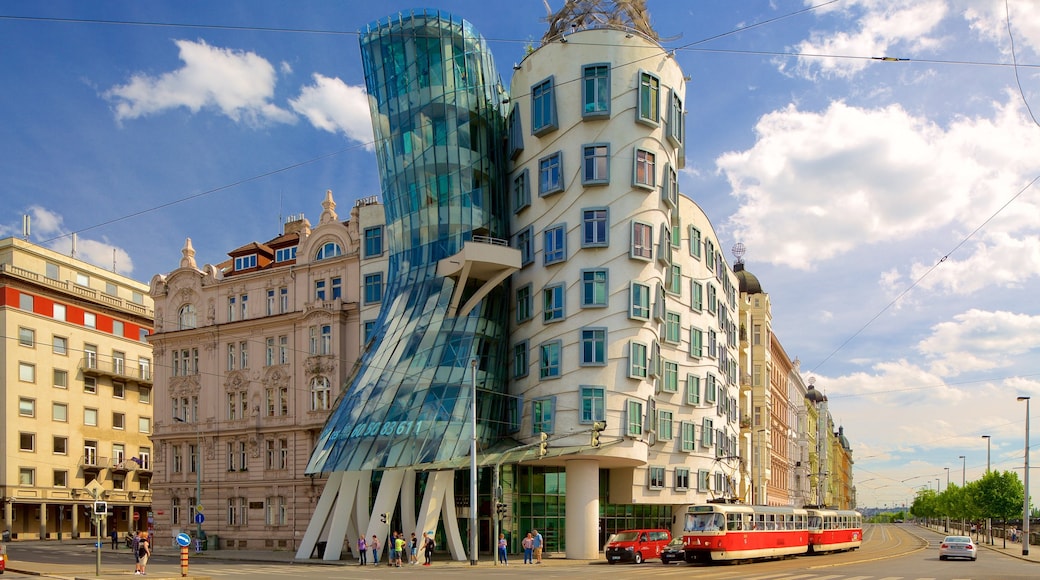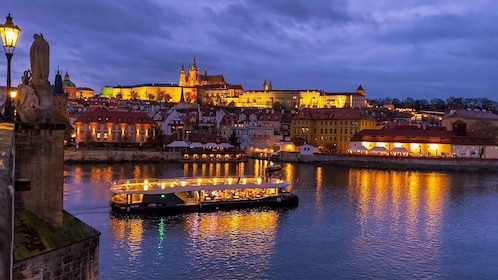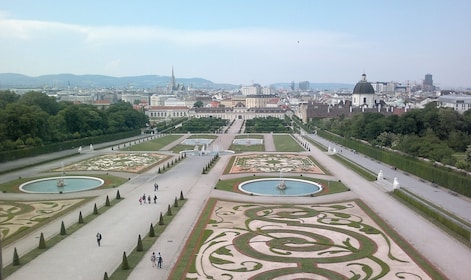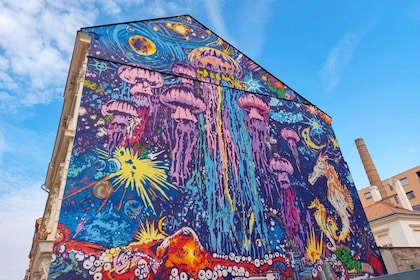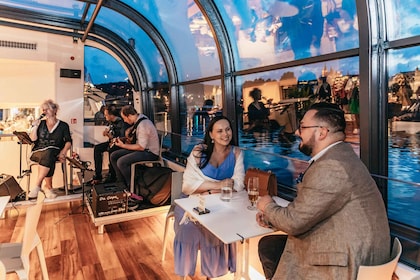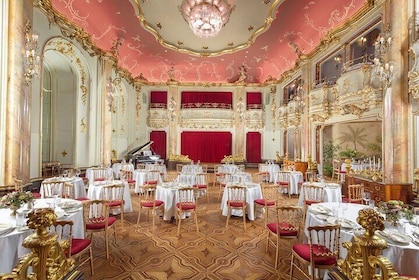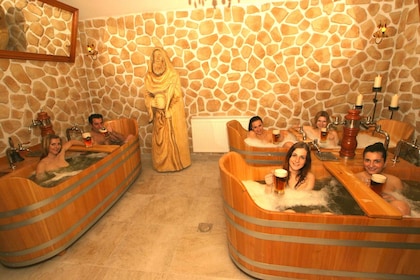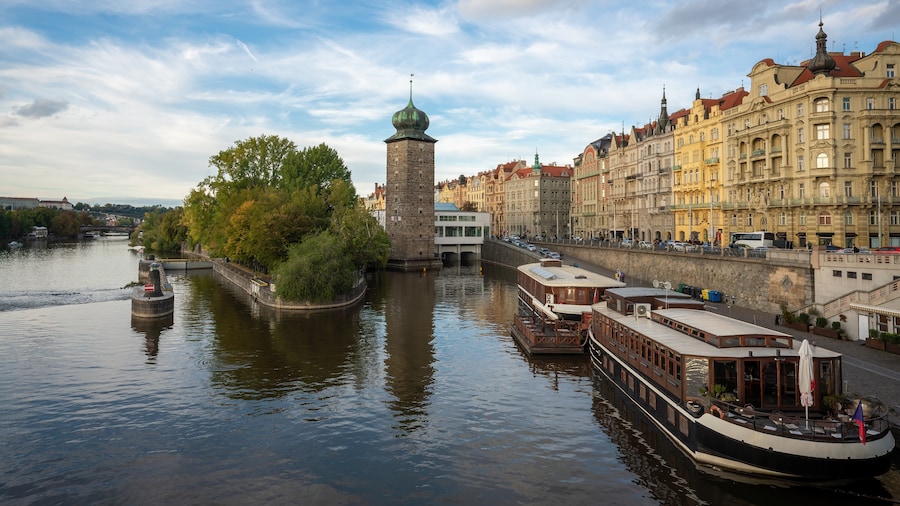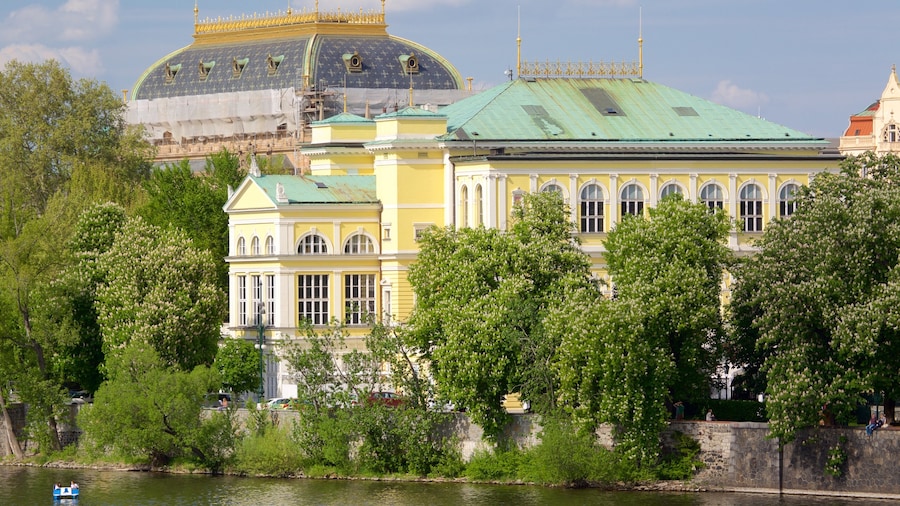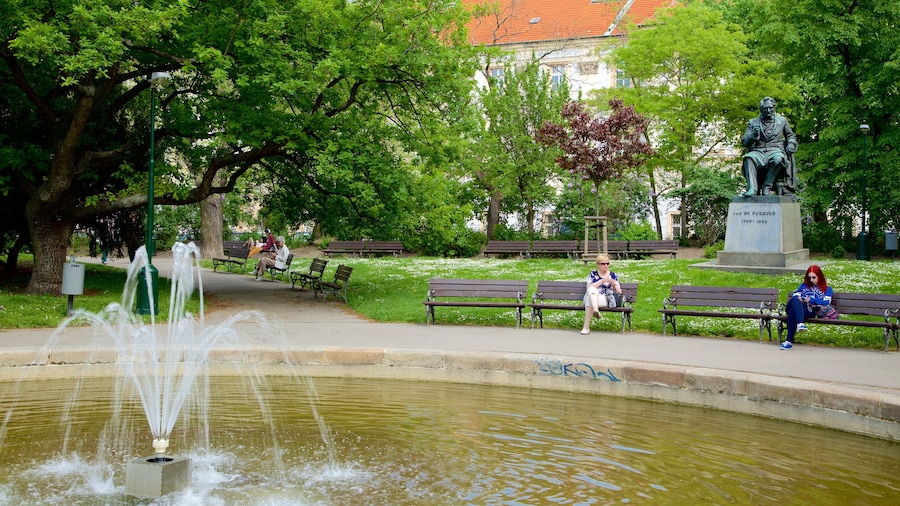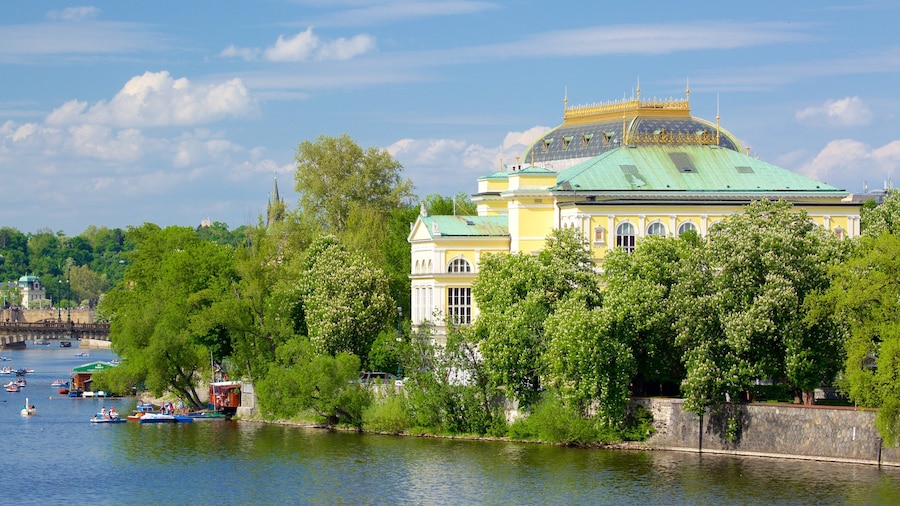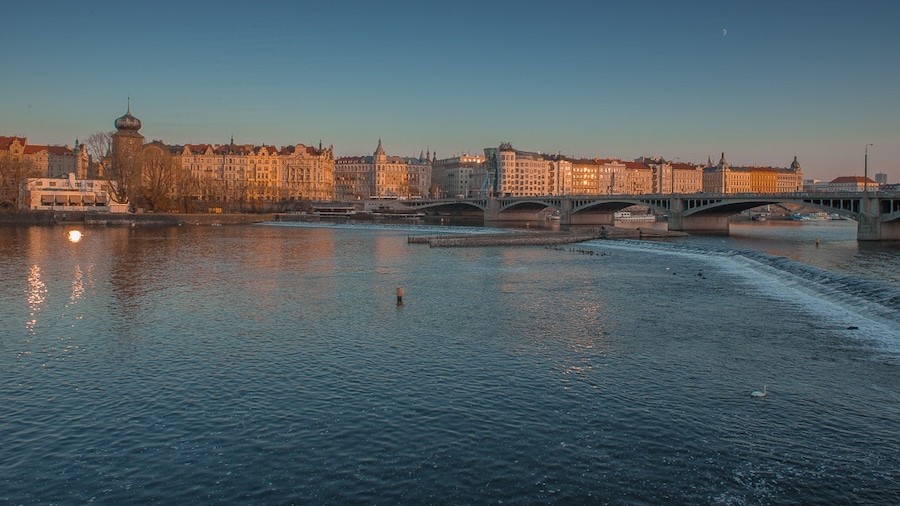A modern building housing a popular bar and restaurant, standing in stark contrast to the rest of the historic Prague skyline.
Prague is a city famous across the world for its picturesque and historic cityscape, rather than for its garish modern architecture. Therefore, you will easily appreciate why the city’s Dancing House (Tančící Dům) was met with so much controversy when it was built in the mid-1990s. A curved B-shaped glass building, it stands in stark contrast to the surrounding buildings and is visited eagerly by modern architecture buffs as well as regular visitors who like to eat at its popular restaurant.
As you approach the dramatic structure from afar, you’ll see its remarkable impact on the cityscape. The building is an example of deconstructivism, an architectural style recognised by its controlled chaos and distortion, making it a significant departure from the surrounding baroque and art nouveau façades.
The brainchild of Czech-Croatian architect Vlado Milunić and Canadian Frank Gehry, the Dancing House was initially met with fierce resistance by locals who were aghast at its impact on the traditional landscape. These days, however, it has grown to become a much-loved landmark of the modern city, and in 2012 was even featured on a Czech coin.
Head inside the building after stopping to marvel at the architecture from the outside, and you can enjoy a drink at the ground floor Celeste Bar before taking the lift to a rooftop terrace for dinner at the popular Celeste Restaurant. From here you can savour delicious modern European cuisine whilst admiring the great view of Prague. On Tuesday and Wednesday afternoons you can even pay a visit for a wine tasting session inside the building.
Situated in the New Town, Dancing House is just a quarter of an hour’s walk from Wenceslas Square. It is also easy to reach on the metro or the tram. The restaurant is open for lunch and dinner throughout the week, but is closed on Sunday.
